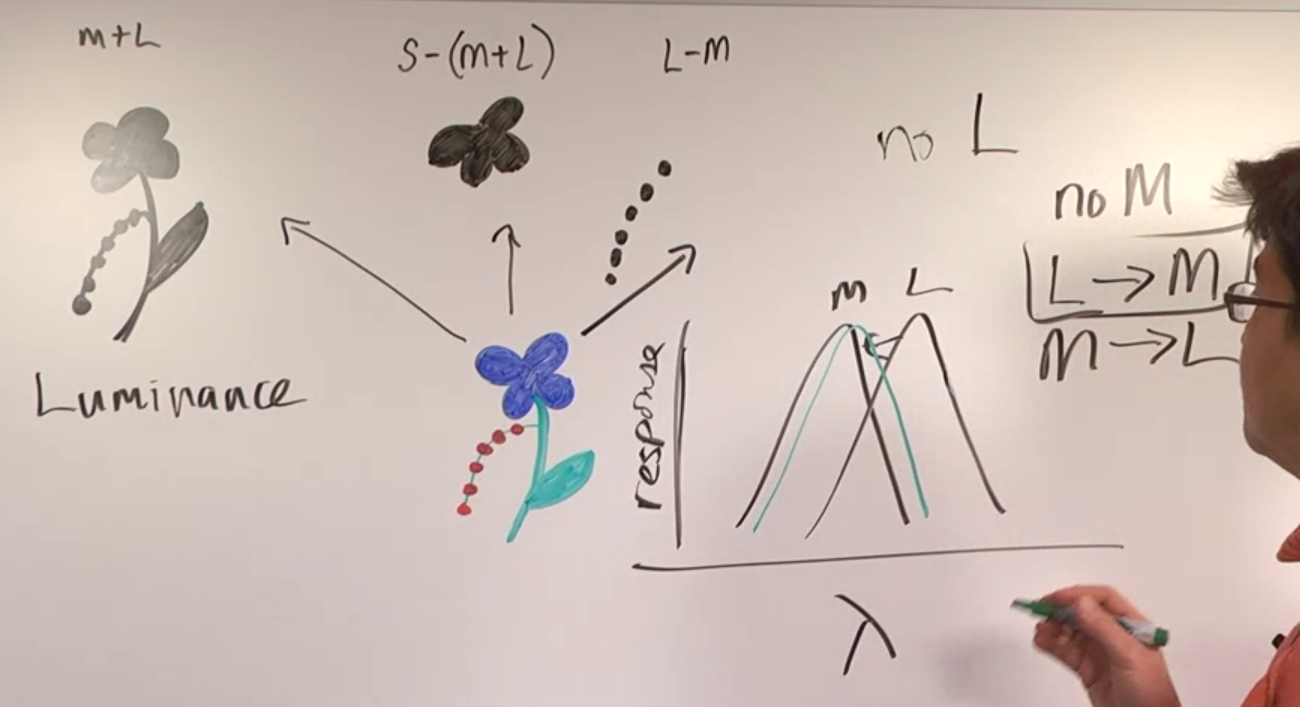 Light and Color Perception
Light and Color Perception
- Light itself has no color; it has a wavelength. Our brains interpret these wavelengths as colors.
- The visible spectrum shows the range of wavelengths humans perceive as different colors (violet, blue, green, yellow, orange, red).
Types of Cones and Their Roles in Color Vision
- There are three types of cones, each with a peak sensitivity to a specific wavelength range:
- Short-wavelength cones (S cones) - sensitive to blue light.
- Medium-wavelength cones (M cones) - sensitive to green light.
- Long-wavelength cones (L cones) - sensitive to red light.
From Cones to Color Perception
- The retina performs three key calculations before sending signals to the brain:
- Luminance channel: combines signals from M and L cones, creating the basic brightness information.
- Short-wavelength channel: emphasizes the blue color by subtracting input from S cones from the combined M and L cone input.
- Red-green channel: compares the outputs of M and L cones, allowing us to distinguish reds and greens.
Evolutionary Advantage of Color Vision
- The ability to differentiate reds and greens is thought to be an evolutionary advantage for primates, enabling them to identify ripe fruits.
- The genes for M and L cones are located close together on the X chromosome.
Color Blindness
- Color blindness, more common in males due to the single X chromosome, occurs when there’s a defect in one or more cone types.
- Four main types of color blindness exist:
- No L cones
- No M cones
- L cones shifted towards M cones (most common)
- M cones shifted towards L cones
- The most common type makes it difficult to distinguish red from green, especially in low light where positional cues are absent (e.g., traffic lights).
Next Up: Transmission of Visual Information
- The lecture will shift focus to how visual information travels from the retina to the brain for visual perception.